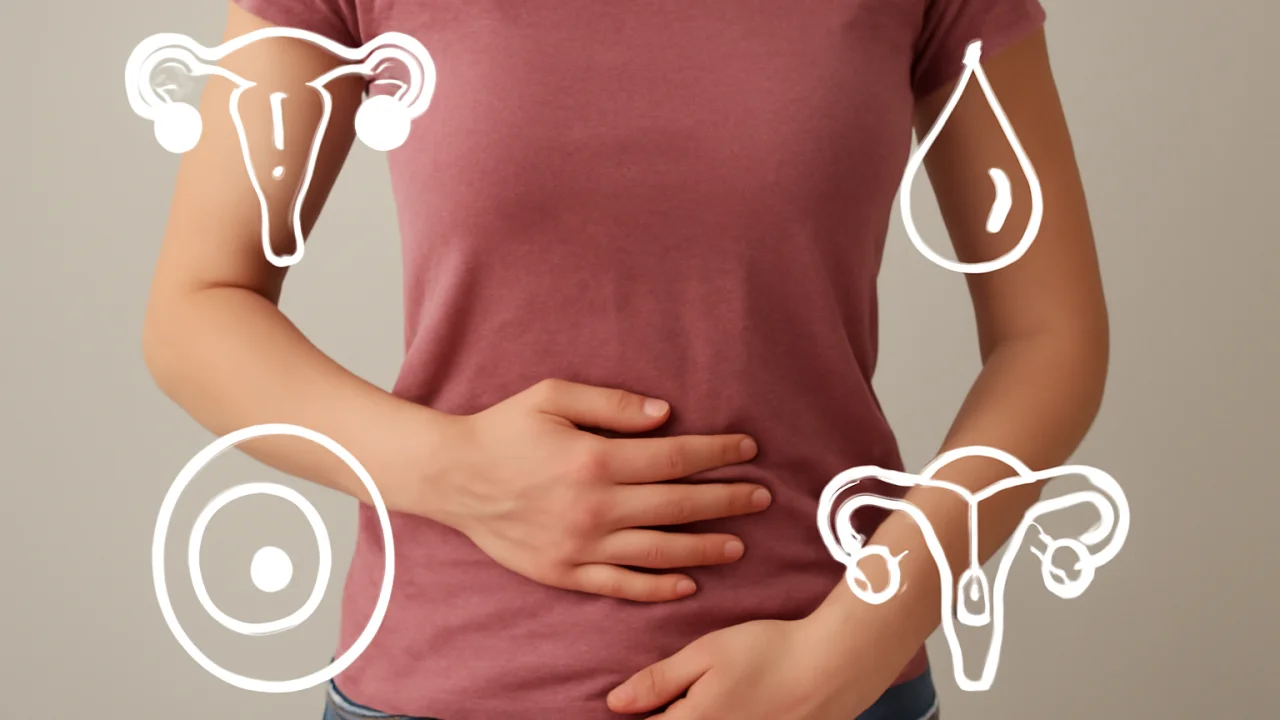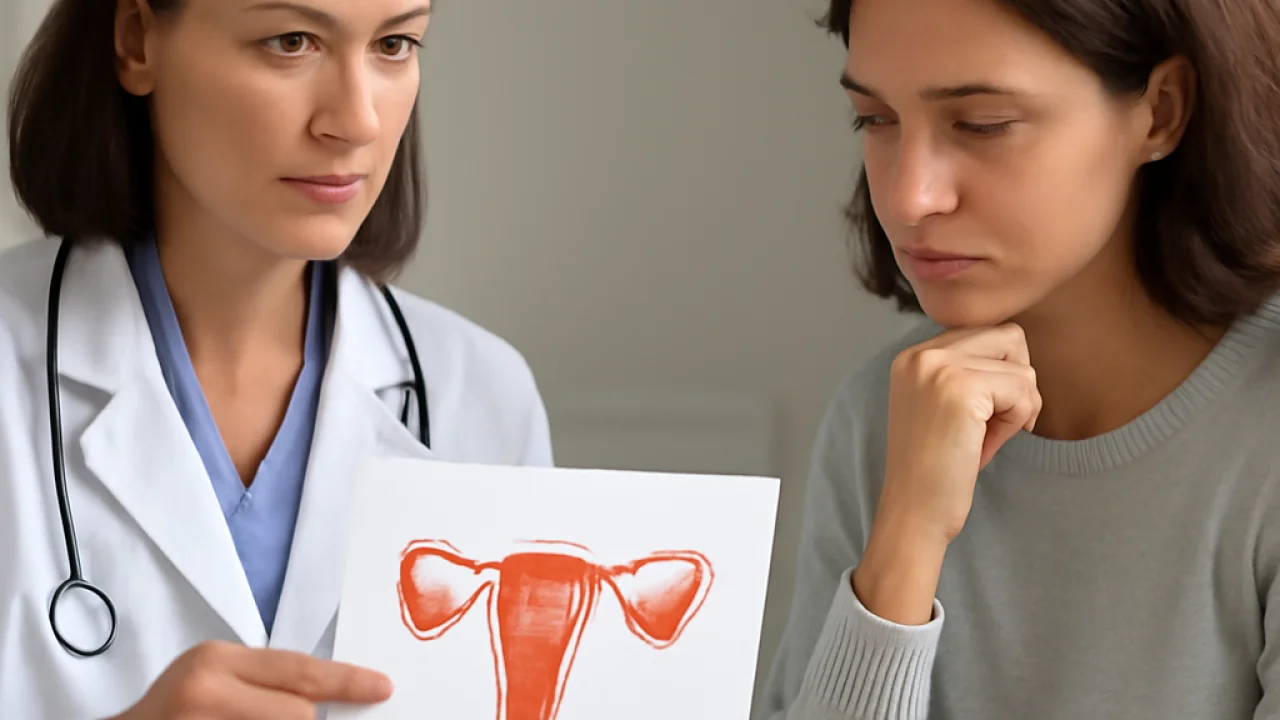
Top Women’s Health Conditions: Symptoms, Treatments, and Prevention
📑 Contents
Top Women’s Health Conditions: Symptoms, Treatments, and Prevention
Women’s health encompasses a wide range of conditions that can impact physical, mental, and emotional well-being. From reproductive health issues to chronic diseases, understanding the most prevalent women’s health conditions is vital for prevention, early detection, and effective management. In this guide, we’ll cover key health concerns, their symptoms, available treatments, and practical prevention strategies.
Understanding Women’s Health: Why It Matters

Women face unique health challenges throughout their lives, influenced by hormonal changes, reproductive health, and gender-specific risk factors. Conditions like breast cancer, polycystic ovary syndrome (PCOS), endometriosis, and osteoporosis not only affect quality of life but can also lead to long-term complications if left unaddressed. Regular health check-ups, awareness of symptoms, and proactive lifestyle choices are essential for maintaining optimal health.
Common Women’s Health Conditions

Below are some of the most common health conditions affecting women today, along with their key symptoms and risk factors.
| Condition | Typical Symptoms | Main Risk Factors |
|---|---|---|
| Polycystic Ovary Syndrome (PCOS) | Irregular periods, excessive hair growth, acne, weight gain | Family history, obesity, insulin resistance |
| Endometriosis | Pelvic pain, heavy periods, infertility, fatigue | Family history, never giving birth, menstrual history |
| Breast Cancer | Lump in breast, changes in breast shape, nipple discharge | Age, genetics, hormonal factors, lifestyle |
| Osteoporosis | Bone fractures, loss of height, back pain | Menopause, family history, low calcium/vitamin D |
| Heart Disease | Chest pain, shortness of breath, fatigue | High blood pressure, high cholesterol, smoking, inactivity |
| Depression & Anxiety | Persistent sadness, loss of interest, anxiety, sleep issues | Hormonal changes, life events, genetics |
Reproductive Health Conditions

Polycystic Ovary Syndrome (PCOS)
PCOS is a hormonal disorder affecting up to 10% of women of reproductive age. It can cause irregular menstrual cycles, infertility, weight gain, acne, and excess hair growth. Early diagnosis is crucial to prevent complications like type 2 diabetes and heart disease.
- Treatment: Lifestyle changes (diet, exercise), hormonal birth control, medications for insulin resistance
- Prevention: Maintaining a healthy weight and regular physical activity can help manage symptoms.
Endometriosis
Endometriosis occurs when tissue similar to the uterine lining grows outside the uterus, causing pelvic pain, heavy periods, and sometimes infertility. It affects about 1 in 10 women of reproductive age.
- Treatment: Pain relief (NSAIDs), hormonal therapies, surgery in severe cases
- Prevention: There is no known way to prevent endometriosis, but early treatment can relieve symptoms and reduce complications.
Hormonal and Menstrual Disorders
Premenstrual Syndrome (PMS) and Premenstrual Dysphoric Disorder (PMDD)
PMS encompasses physical and emotional symptoms occurring before menstruation, while PMDD is a severe form causing significant mood disturbances. Symptoms may include mood swings, irritability, bloating, and fatigue.
- Treatment: Lifestyle modifications, stress management, antidepressants, birth control pills
- Prevention: Regular exercise, a balanced diet, and adequate sleep can help manage symptoms.
Menopause and Perimenopause
Menopause marks the end of a woman’s reproductive years, usually occurring between ages 45 and 55. Symptoms include hot flashes, night sweats, mood changes, and bone loss.
- Treatment: Hormone replacement therapy (HRT), non-hormonal medications, lifestyle changes
- Prevention: While menopause is inevitable, healthy habits can reduce symptom severity and prevent complications like osteoporosis.
Chronic Diseases in Women
Breast Cancer
Breast cancer is the most common cancer among women globally. Early detection through regular mammograms and self-exams is critical for successful treatment.
- Treatment: Surgery, radiation, chemotherapy, hormone therapy, targeted drugs
- Prevention: Regular screenings, maintaining a healthy weight, limiting alcohol, and not smoking
Osteoporosis
Osteoporosis leads to weak, brittle bones and is more common after menopause due to decreased estrogen. It increases the risk of fractures, especially in the hip, spine, and wrist.
- Treatment: Calcium and vitamin D supplements, weight-bearing exercise, medications to strengthen bones
- Prevention: Adequate calcium and vitamin D intake, regular exercise, avoiding smoking and excessive alcohol
Heart Disease
Heart disease is the leading cause of death among women. Symptoms may differ from those in men and can include chest pain, shortness of breath, nausea, and fatigue.
- Treatment: Medications, lifestyle changes, procedures to open blocked arteries
- Prevention: Healthy diet, regular exercise, managing blood pressure and cholesterol, not smoking
Mental Health in Women
Women are at higher risk of depression and anxiety, often influenced by hormonal fluctuations, life events, and societal pressures. Conditions like postpartum depression and perinatal anxiety require prompt attention and support.
- Treatment: Counseling, therapy, medication, support groups
- Prevention: Building a strong support system, stress management, regular exercise
Prevention and Healthy Lifestyle Tips
Many women’s health conditions can be prevented or better managed with healthy lifestyle choices:
- Eat a balanced diet rich in fruits, vegetables, lean proteins, and whole grains.
- Exercise regularly—aim for at least 150 minutes of moderate activity per week.
- Stay up-to-date with recommended screenings and vaccinations.
- Manage stress through mindfulness, yoga, or hobbies.
- Get enough sleep and maintain a regular sleep schedule.
- Avoid smoking and limit alcohol consumption.
FAQs About Women’s Health Conditions
What are the most important screenings for women?
Key screenings include Pap smears for cervical cancer, mammograms for breast cancer, bone density tests for osteoporosis, and cholesterol/blood pressure checks for heart disease.
How often should women see a healthcare provider?
Women should have annual wellness exams, but frequency of specific screenings depends on age, family history, and individual risk factors. Discuss a personalized plan with your provider.
Is hormone replacement therapy safe for menopause?
HRT can be safe and effective for many women, especially when started around menopause onset. However, it may not be suitable for those with certain health risks. Always consult a healthcare professional.
Can lifestyle changes really reduce disease risk?
Yes, adopting a healthy diet, regular exercise, and avoiding smoking or excessive alcohol can significantly lower the risk of many chronic diseases.
When should I talk to a doctor about abnormal periods?
Consult your doctor if you experience very heavy bleeding, irregular cycles, severe pain, or if your periods stop for several months (not due to pregnancy or menopause).
Summary
Women’s health conditions span a wide spectrum, from reproductive and hormonal disorders to chronic diseases and mental health challenges. Awareness, early detection, and healthy lifestyle choices are key to prevention and effective management. Stay informed, prioritize regular checkups, and maintain open communication with your healthcare provider to support lifelong well-being.











